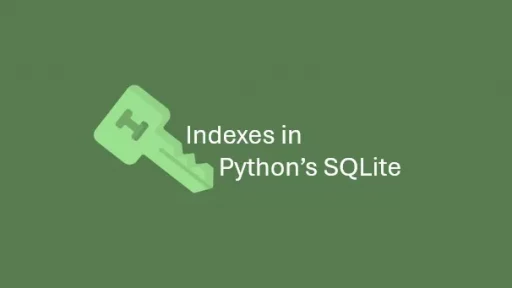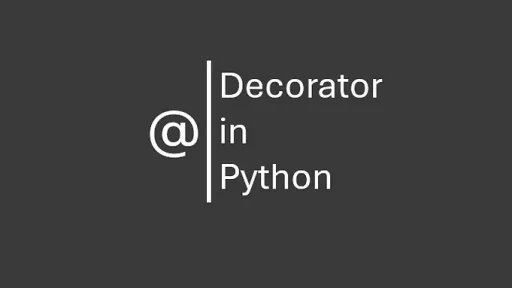The distinction between an expression and statement may not be something every developer considers during day-to-day programming, especially if you’ve been coding for years and have a grasp of Python’s syntax. However, understanding the difference can be valuable in specific contexts and for improving your code.
Why Know the Difference?
Understanding and Debugging Code:
- When you understand whether a piece of code is an expression or a statement, you can better anticipate its behavior. For example, it valuable to know whether a piece of code is expected to return a value (expression) or simply perform an action (statement).
- If you’re trying to chain operations or optimize performance, knowing what evaluates to a value (expressions) versus what simply controls logic or alters state (statements) becomes essential.
Functional Programming:
- Python allows mixing functional and imperative programming styles. Functional programming heavily relies on expressions (e.g., lambdas, list comprehensions, generator expressions). Recognizing these allows you to write more concise, reusable, and modular code.
- Statements, such as assignments or loops, are not valid in purely functional paradigms. Knowing this distinction helps when integrating functional-style programming techniques into your Python codebase.
Cleaner Code Design:
- Expressions can often replace statements to make code shorter, clearer, and more declarative. For example, using a list comprehension (expression) instead of a loop (statement) can improve readability and reduce boilerplate code.
While pure expressions allow for concise, predictable, and modular design, there are situations where side effects are unavoidable or even necessary. For example, interacting with external systems, such as printing to the console, writing to a file, or updating a database, often involves operations that modify the program’s state or produce observable behaviors.

The image above categorizes Python code constructs based on whether they produce a value and whether they cause side effects. The vertical axis represents whether a construct yields a value, while the horizontal axis shows whether it causes observable changes to the program’s state. By understanding these distinctions, you can write cleaner, more efficient code. Let’s explore each quadrant, starting with the Top-Left Quadrant: Pure Expressions.
Top-Left Quadrant: Pure Expressions
Definition:
A pure expression is any piece of code that produces a value and does not alter the program’s state or cause side effects. These constructs are deterministic: given the same inputs, they always produce the same result without modifying anything outside of themselves.
Examples:
- Arithmetic operations:
2 + 2,5 * 3 - String methods:
"hello".upper() - List comprehensions:
[x**2 for x in range(5)]
Code Example:
# Pure expression
result = 2 + 2 # Produces the value 4
uppercase = "hello".upper() # Produces the value "HELLO"
squares = [x**2 for x in range(5)] # Produces the list [0, 1, 4, 9, 16]Pure expressions are widely used in Python when you need to compute values without affecting other parts of the program. Their predictability makes them ideal for functional programming or mathematical calculations.
Top-Right Quadrant: Expressions with Side Effects
Definition:
Expressions with side effects produce a value but also modify the program state or cause observable behaviors, such as printing to the console, writing to a file, or updating a global variable.
Examples:
- A function that prints while returning a value:
def print_and_return(value):
print(f"Value: {value}") # Side effect
return value- List methods like
list.append()returnNonebut alter the list (side effect).
Code Example:
# Expression with a side effect
counter = 0
def increment_and_report():
global counter
counter += 1 # Side effect: modifies the global variable
print(f"Counter: {counter}") # Side effect: prints to the console
return counter # Produces a value
new_value = increment_and_report() # Produces the value 1 and modifies the counterSuch expressions are often used when you need to both perform a computation and interact with the program’s state. While useful, overusing them can make the code harder to debug and predict.
Bottom-Left Quadrant: No-op (No Operation)
Definition:
No-ops are constructs that do not produce a value and do not cause side effects. These are placeholders that ensure syntactical correctness but don’t perform any observable action.
Examples:
pass: Used where Python expects a statement but no action is needed.- Empty code blocks in loops, conditionals, or classes.
Code Example:
# No-op
for i in range(5):
if i % 2 == 0:
pass # Placeholder for future codeNo-ops are particularly useful during development as placeholders for logic you plan to implement later. They allow you to outline your program’s structure without causing errors.
Bottom-Right Quadrant: Pure Statements
Definition:
Pure statements do not directly produce a value, but they alter the program state or control the flow of execution. These include assignments, loops, and conditionals, which modify variables or determine what parts of the program execute next.
Examples:
- Assignment:
x = 5 - Loops:
for,while - Conditionals:
if,elif,else
Code Example:
# Pure statement
x = 10 # Alters the state by assigning a value to the variable x
if x > 5:
print("x is greater than 5") # Alters the control flow based on the condition
while x > 0:
x -= 1 # Alters the state of xKnowing the distinction between expressions and statements can simplify troubleshooting by clarifying what the code is expected to do. For example, if you encounter an error where a value isn’t being returned as expected, identifying whether the problematic code is an expression or a statement can immediately narrow the scope of your debugging.
Example:
Imagine the following scenario:
def calculate_area(length, width):
length * width # Missing a `return` statement
# Calling the function
area = calculate_area(5, 10)
print(area)This code will print None instead of the expected result. The problem is that the function contains an expression (length * width) that calculates a value but doesn’t return it. If you mistakenly treat this as a statement that inherently modifies the program’s state or produces an observable effect, you might miss the need for a return.
Solution:
Adding a return statement ensures the value from the expression is passed back to the calling code:
def calculate_area(length, width):
return length * width # Expression now produces a value returned to the caller
# Calling the function
area = calculate_area(5, 10)
print(area) # Outputs: 50By recognizing that the calculation is an expression and needs explicit handling (via return) to impact the program’s state, you can quickly identify and resolve the issue. This awareness is especially useful in debugging larger, more complex codebases where distinguishing between expressions and statements can prevent wasted time and confusion.
Thank you for reading this article. I hope you found it helpful and informative. If you have any questions, or if you would like to suggest new Python code examples or topics for future tutorials, please feel free to reach out. Your feedback and suggestions are always welcome!
Happy coding!
C. C. Python Programming
You can also find this article at Medium.com


